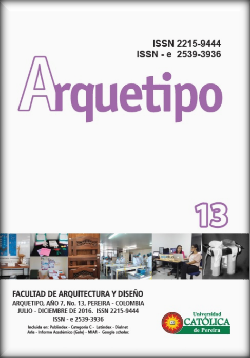Trabajando tecnológicamente: investigaciones sobre cómo los niños pequeños diseñan y fabrican recibiendo educación tecnológica.
Palabras clave:
Diseñar, capacidad tecnológica, niños pequeñosResumen
La educación en tecnología para los primeros años en Australia es un área curricular recientemente definida. Una limitada cantidad de investigaciones en educación en tecnología para niños de edades de tres a ocho años se ha llevado a cabo. Este trabajo presenta los resultados de un estudio piloto que investigó las actividades de planeación, fabricación y evaluación en las que se ocuparon los niños, mientras recibían educación en tecnología en la guardería. En particular, fueron examinadas las habilidades de los niños pequeños para diseñar y luego fabricar su diseño.
Referencias
Anning, A. (1994). Dilemmas and Opportunities of a New Curriculum: Design and Technology with Young Children. International Journal of Technology and Design Education, 4,155–177.
Anning, A. (1997). Drawing Out Ideas: Graphicacy and Young Children. Journal of Technology and Design Education, 7, 219–237.
Berk, L. (1989). Child Development. Massachusetts: Allyn and Bacon.
Cox, E. (1991). The Child’s Point of View. Hemel Hempstead: Harvester/ Wheatsheaf.
Eisner, E. (1972). Amplifying the Mind’s Eye: Sketching and Visual Cognition. Leonardo, 23(1), 117–126.
Fleer, M. (1992). Introducing Technology Education to Young Children: A Design, Make and Appraise Approach. Research in Science Education, 22, 132–139.
Fleer, M. (1993). Can we Incorporate the Principles of the National Statement on Technology Education into our Early Childhood Programs? Australian Journal of Early Childhood, 18(4), 26–34.
Fleer, M. & Sukroo, J. (1995). I Can Make my Robot Dance. Technology for 3–8 Year Old, Curriculum Corporation of Australia, Melbourne, Australia.
Jane, B. (1995). Technology in the primary curriculum: A teacher’s perceptions and student’s learning. Monash University, Vic, Unpublished PhD thesis.
Jane, B. & Smith, L. (1992). Technology in the curriclum – a vehicle for the development of children’s understanding of science concepts through problem solving. Paper presented at the Australasian Science Education Research Association Conference, University of Waikato, Hamilton, New Zealand, July.
Jones, A. & Carr, M. (1993). Analysis of Student capability. Working paper, Vol. 2 of the Learning in Technology Education Project. University of Waitato, New Zealand.
Malaguzzi, L. (ed.) (1987). I Cento Linguaggi dei Bambini, The Hundred Languages of Children, Assessorato all ‘istruzione, Reggio Emilia (Published in Italian & English).
McLaren, S. (1997). Value Judgements: Evaluating Design. A Scottish Perspective on a Global Issue’. International Journal of Technology and Design Education, 7, 259–276.
Medway, P. (1994). The Language Component in Technological Capability: Lessons from Architecture’. International Journal of Technology and Design Education, 4, 85–107.
Richie, S. M. & Hampton, B. (1996). Learning in-the-making: A Case Study of Science and Technology Projects in a Year Six Classroom. Research in Science Education 26(4), 391–407.
Rogers, G. (1998). The Designing Stage of Design, Make and Appraise: A Case Study involving Young Children Designing’. Paper presented at the Australasian Science Education Research Association conference, July 1998 Darwin, NT.
Ropohl, G. (1997). Knowledge Types in Technology. International Journal of Technology and Design Education, 7, 65–72.
Roth, W-M. (1995). From “Wiggly Structures” to “Unshaky Towers”: Problem Framing, Solution Finding, and Negotiation of Course of Actions During a Civil Engineering Unit for Elementary Students’. Research in Science Education, 25(4) 365–382.
Siraj-Blatchford, J. (1997). Learning Technology, Science and Social Justice: An Integrated Approach for 3–13 Year Olds. Nottingham: Education Now Publishing Co-operative.
Solomon, J. & Hall, S. (1996). An Inquiry into Progression in Primary Technology: A Role for Teaching’. International Journal of Technology and Design Education, 6, 263–282.

